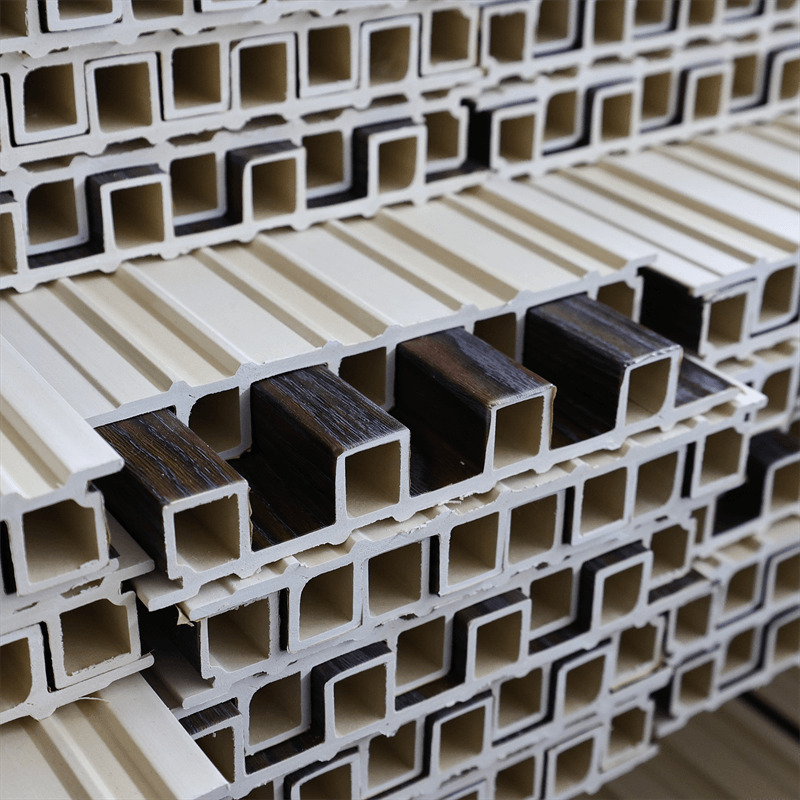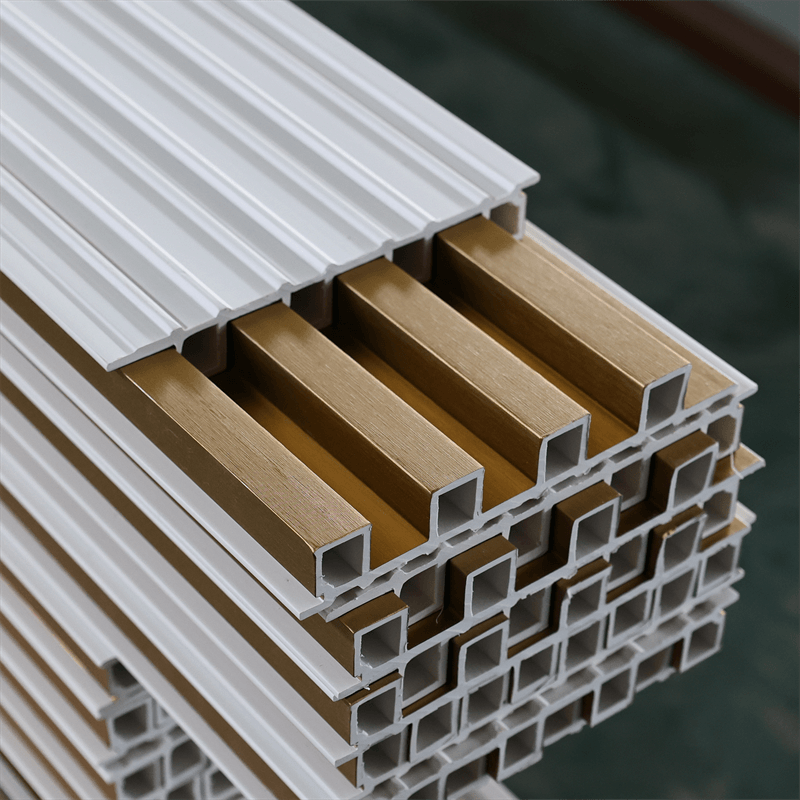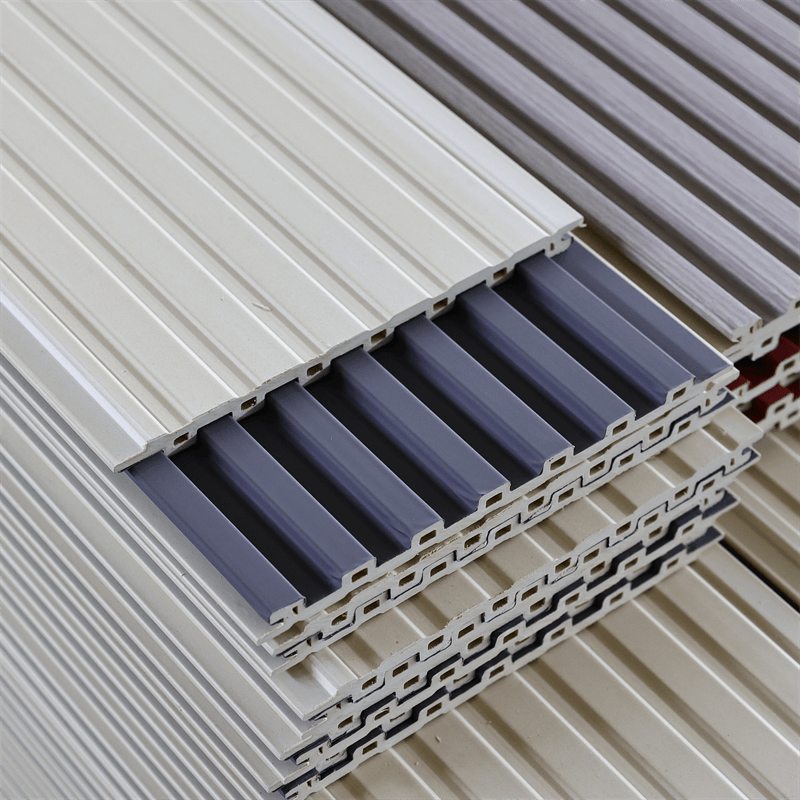As the world continues to embrace sustainable and innovative building materials, Wood-Plastic Composite (WPC) wall panels are emerging as a game-changer in the realm of interior and exterior design.
These panels, made from a blend of wood fibers and recycled plastics, offer a wide range of advantages that position them as the future of design.
In this essay, we will explore the various benefits of WPC wall panels, highlighting their sustainability, durability, versatility, and aesthetic appeal.
We will delve into how these panels are shaping the future of design and transforming spaces in both residential and commercial settings.

I. Sustainable Design Solutions
In an era where sustainability is at the forefront of architectural considerations, WPC wall panels provide an eco-friendly alternative to traditional building materials.
Here are some key aspects of their sustainability:
- Use of Recycled Materials: WPC wall panels are primarily composed of recycled plastic materials, reducing the demand for virgin plastic and minimizing waste. By utilizing recycled materials, these panels help divert plastic from landfills and contribute to the conservation of natural resources.
- Reduced Carbon Footprint: The production of WPC wall panels requires significantly less energy compared to the manufacturing processes of conventional building materials such as concrete or bricks. Additionally, the use of recycled materials reduces the carbon footprint associated with plastic waste, making WPC panels a greener choice.
- Preservation of Forests: By incorporating wood fibers into their composition, WPC panels help reduce the reliance on timber. This decreases the pressure on natural forests and promotes sustainable forestry practices, contributing to the preservation of valuable ecosystems.
II. Durability and Longevity
WPC wall panels offer exceptional durability and longevity, making them a reliable choice for both interior and exterior applications.
Consider the following advantages in terms of durability:
- Moisture Resistance: Unlike traditional wood, WPC panels are highly resistant to moisture, preventing issues such as warping, rotting, and mold growth. Their moisture-resistant properties make them suitable for installation in areas prone to humidity, such as bathrooms and kitchens.
- Weather Resistance: WPC panels are designed to withstand various weather conditions, including extreme temperatures, UV rays, and heavy rainfall. They do not fade, warp, or crack when exposed to sunlight or moisture, making them ideal for both interior and exterior installations.
- Impact Resistance: WPC wall panels exhibit high impact resistance, reducing the likelihood of dents, scratches, and general wear and tear. This durability ensures that the panels maintain their aesthetic appeal and structural integrity over time.
- Pest and Termite Resistance: Unlike traditional wood, WPC panels are naturally resistant to pests and termites, eliminating the need for chemical treatments or ongoing pest control measures. This resistance ensures the longevity and structural stability of the panels.
III. Versatility in Design and Application
WPC wall panels offer unparalleled versatility, allowing designers and homeowners to explore a wide range of design possibilities.
Consider the following aspects of their design versatility:
- Aesthetic Variety: WPC panels are available in a plethora of colors, finishes, and textures. From natural wood-like finishes to contemporary solid colors, there is a wide range of options to suit different design preferences and styles.
- Customization Options: WPC panels can be easily customized in terms of size, shape, and pattern, enabling the creation of unique and personalized designs. Whether it’s creating feature walls, intricate patterns, or decorative elements, the versatility of WPC panels allows for endless possibilities.
- Interior and Exterior Applications: WPC wall panels are suitable for both interior and exterior applications, providing consistency in design throughout a space. Whether it’s enhancing the aesthetic appeal of a living room or creating a durable and visually pleasing exterior façade, WPC panels offer a versatile solution.
- Compatibility with Other Materials: WPC panels can be easily combined with other materials such as glass, metal, or stone, offering a seamless integration of different elements in the design. This compatibility allows for creative combinations and the achievement of unique visual effects.
IV. Easy Installation and Maintenance
WPC wall panels are designed for easy installation and low maintenance, providing convenience and cost savings.
Consider the following advantages in terms of installation and maintenance:
- Simple Installation Process: WPC panels feature user-friendly installation systems, such as interlocking mechanisms or tongue-and-groove designs. These systems make the installation process quick and efficient, reducing labor costs and construction time.
- Lightweight and Easy Handling: WPC panels are lightweight compared to traditional building materials, making them easier to handle and transport. Their lightweight nature simplifies the installation process, especially in situations where heavy machinery or extensive labor may not be readily available.
- Minimal Maintenance Requirements: WPC panels require minimal maintenance compared to traditional wood or concrete walls. They do not require painting, sealing, or staining, saving homeowners both time and money in the long run. Regular cleaning with mild detergent and water is typically sufficient to maintain their appearance.
- Long-Term Cost Savings: The durability and longevity of WPC wall panels translate into long-term cost savings. Their resistance to moisture, weather, and pests reduces the need for repairs, replacements, or ongoing maintenance, minimizing expenses associated with upkeep.

WPC wall panels are revolutionizing the future of interior and exterior design with their sustainable qualities, durability, versatility, and ease of installation.
As architects, designers, and homeowners increasingly prioritize eco-friendly and innovative building solutions, WPC panels emerge as a frontrunner.
With their sustainable attributes, including the use of recycled materials and reduced carbon footprint, WPC panels contribute to a greener and more sustainable construction industry.
Their durability and longevity make them a reliable choice for various applications, ensuring the long-term preservation of aesthetic appeal and structural integrity.
The versatility of WPC wall panels offers endless design possibilities, allowing designers to create unique and personalized spaces.
The ease of installation and minimal maintenance requirements further enhance their appeal, providing convenience and cost savings for homeowners and builders alike.
In conclusion, WPC wall panels represent the future of interior and exterior design.
With their sustainable nature, durability, versatility, and easy installation, they are transforming spaces and setting new standards in the industry.
As the world embraces sustainable and innovative building practices, WPC panels pave the way for a greener, more aesthetically pleasing, and functionally superior future.

